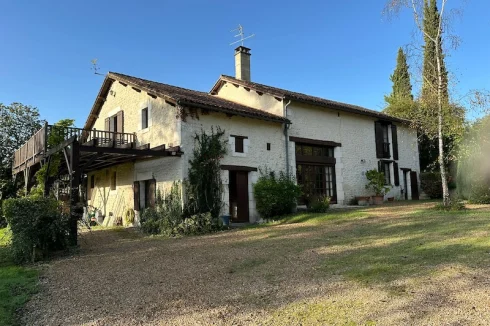Merger of French Town Halls
Thursday 07 February 2019
The merger of town halls in France continued apace last year, but the reorganisation looks set to slow down over the next few years.
Over the past five years a rationalisation of the structure of local government has been taking place in France, primarily through the merger of many small local councils.
France has more local councils and more layers of local government than any other country in Europe. Some of the town halls have a population of less than 200 inhabitants.
The structure is ill-adapted to the weight of responsibility small councils have been required to carry out, and it is expensive and inefficient.
Some realisation of that has been evident for many years, with many rural councils obliged to operate on an inter-municipal level for some services, eg water and sanitation.
This process has effectively become obligatory under the Macron government, which has sought to speed up a rationalisation of the structure, with the prefets given strong powers to impose changes.
Many of the responsibilities that were once carried out by the local mairie have been transferred to inter-communal councils or newly merged communes, eg tourism, sanitation.
The reforms envisage the amalgamation of councils into larger units having a minimum population of 5,000 inhabitants, with a preference for joint councils with a minimum population of 10,000 inhabitants.
In some cases, local councils are also being asked to merge with adjoining major cities to form a new political and administrative unit containing at least 500,000 inhabitants, called a métropole. The aim of this reform is to increase the competitiveness of the major urban conurbations in France.
Last year, over 200 new municipal councils were created, bringing together more than 600 town halls.
As a result of these groupings, the number of town halls in France has now fallen below 35,000, and almost all communes are now part of an inter-municipal structure.
That is a significant increase in mergers from 2017, when only 37 new municipalities had been created, involving 96 councils.
In total, more than 750 new councils have now been created since the reorganisation began in 2012
The new dynamic is particularly evident in the department of Deux-Sèvres (Nouvelle-Aquitaine), where 17 new municipalities have been created, bringing together 51 municipalities. In the Manche (Normandy) 11 new municipalities have been created where 41 previously existed, and in Charente and Jura 9 newly merged councils created where over 20 were previously in place in each department.
In the Savoie 8 new councils have been created, in Ille-et-Vilaine and Ain 7, and 6 new communes are in place in the departments of Dordogne, Mayenne, Isère, Eure-et-Loir, Eure and Calvados.
Some of the mergers to create new communes have been significant, such as in the Manche where the 6 communes of Carentan-les-Marais, Vierville, Montmartin-en-Graignes, Catz, Saint-Hilaire-Petitville, and Brucheville have been merged and baptised Carentan-les-Marais.
Nevertheless, many of the new communes still remain relatively small, with an average of about 3,220 inhabitants, well below the target of a minimum of 5,000 inhabitants.
All of these new councils will benefit from financial guarantees that have been agreed by the government, although this in itself has caused a great deal of resentment amongst other councils who have suffered from the substantial cut-backs in central government grants.
However, it looks like the process is going to slow down over the next few years, in part due to prospective local elections across the country when the distribution of largesse to local councils is forbidden in law, and also due to the impact of the gilet jaunes movement, which has obliged the government to open up a discourse with councils on the future.
There is huge resentment from most of them to the heavy-handed approach adopted by the government to the reorganisation, and discontent with the abolition of the taxe d’habitation, which they see as reducing their autonomy.
Neither have many councils been happy about the reorganisation of the regional structure that took place in 2016, when the number of administrative regions was reduced from 21 to 13. There remain ongoing attempts to unravel some of these changes, as part of which the government looks ready to concede to regional status for Alsace, separating it from the newly created region of Grand Est.
Following the opening of the "grand débat national" President Macron initiated he has promised to discuss the 'Loi Notre' that governs the reorganisation “afin d’améliorer ce qui dans cette loi ne fonctionne pas”.
He seems to have recognised that it is having a profoundly adverse impact on the relationship with the councils stating: "The enforced intermunicipality, the reorganisations over the years, and the accelerated regionalisation with the economic phenomena we are experiencing, have given the feeling that we are becoming distant."
Related Reading:
Thank you for showing an interest in our News section.
Our News section is no longer being published although our catalogue of articles remains in place.
If you found our News useful, please have a look at France Insider, our subscription based News service with in-depth analysis, or our authoritative Guides to France.
If you require advice and assistance with the purchase of French property and moving to France, then take a look at the France Insider Property Clinic.





